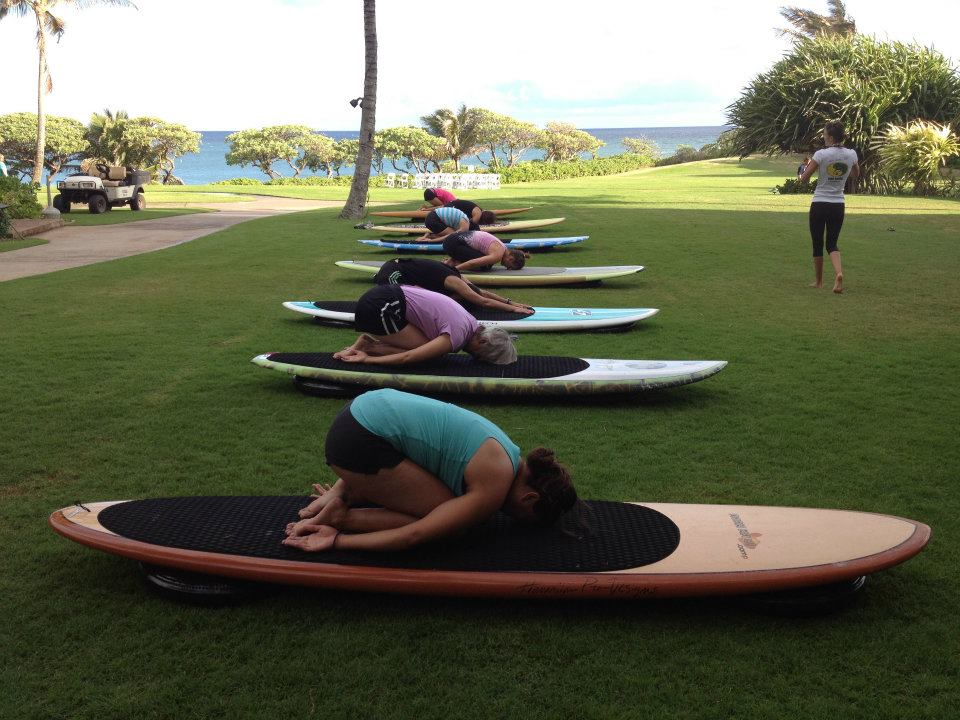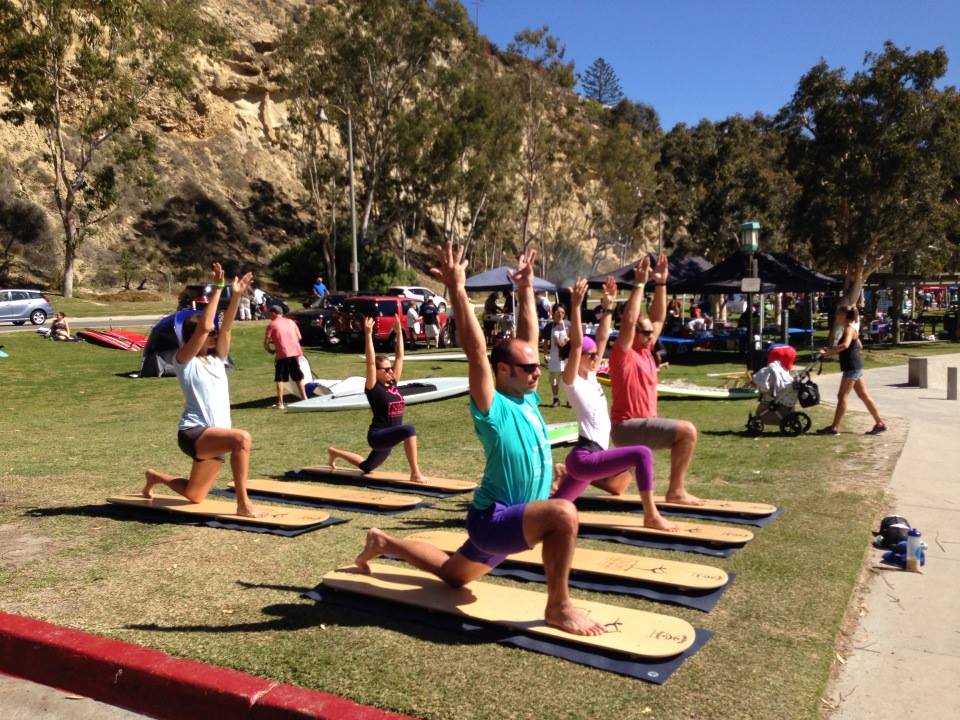Stand up paddle boarding is slowly becoming the most popular lake activity and watersport pastime and SUP Yoga is its most popular class. Today, it is hard not to find a paddleboarding outfitter that does not offer some sort of SUP Yoga class. A lot of this success is the fact that yoga itself has become so popular over the past decade. What you now see are yoga students and teachers wanting to try SUP Yoga and are diving into a class without knowing how to paddle. Believe it or not I have seen students who do not even know how to swim. If water safety is number one, should there be a pre-requisite for SUP Yoga classes? What's easier: SUP on a windy day or SUP Yoga for your first time? Is it safe to hop into SUP Yoga without an intro to paddle boarding course? Should we say the same about yoga and an intro to yoga course? If there are too many rules and pre-requisites will this deter someone from getting on board at all?
I talked about this with two of the top names in the industry: one of the SUP Yoga pioneers Lauren Peterson of Namaste SUP and Boga SUP racer and yoga instructor Jeramie Vaine
1. The Foundation of Land
According to Lauren Peterson, "LAND sets the foundation. SUP Yoga instructors teach everything the students need to know on land. The instructors need to do a mandatory 15 minute demonstration and lesson on land with the boards set up on bosu domes or indo board cushions, as a simulation for what is to come on the water. Students learn the basic strokes and safety practices before going on the water and every possible scenario is discussed on land. How to turn your board, stop your board, enter and exit the water, proper paddle stroke, what to do in an emergency, where the students stand and practice yoga on the board, proper paddle height and A frame. Once the students feel confident on land then we take them to the water and do a 30 minute paddle lesson getting them comfortable with their paddle skills and then an hour and fifteen minute yoga class ending with savasana and buffering enough time for 10-15 minute paddle back to home base."
"Everything needs to be set on land first so that instructors aren't yelling out important key points and instructions on the water. On the water is application and review, instruction is on land: we do this so that the students have a more enjoyable time on the water, also it is easier to teach on land then on the water. On water there are too many distractions for the students to learn, wind can also sometimes make it difficult for them to hear the instruction as well."
She went on to say that, "It is important for students to know how to paddle, for instance getting from the shore to the anchor system: from point A to point B. Furthermore there are so many variables such as wind, wake, waves, current, it is important to give students the knowledge to make safe decisions when maneuvering the board if such variables arise. There are some SUP yoga classes integrate paddling into their sup yoga class. For instance some power yoga classes on the water have the students paddle and perform asana's simultaneously."
2. The Importance of the Instructor
Jeramie Vaine states that, "Instructors are the most important piece to the growth of SUP, if students have a great first experience they will tell everyone about it and encourage them to try, if it goes the other way our sport will get a bad rap of being difficult and will hinder our growth."
"For the average student that attends a SUP Yoga class, I defer this back to the instructor running the program, they know their body of water, their anchor system and how they run their class. If they have to travel a good distance to practice SUP Yoga or do not anchor, then basic paddle techniques need to be integrated into the lesson. The student can learn the basics of how to paddle before entering the water, just as they would at a beginner paddle lesson. The sport of SUP is very user friendly so a student can become a paddler within a short amount of time."
3. Have Fun and Be Safe
Lauren concludes that, "It is a prerequisite that all SUP Yoga practitioners must know how to paddle. Intro to SUP is a MUST." Similarly Jeramie states that, "The sport of SUP is introducing a wide demographic of people to something brand new, we should encourage and embrace all aspects of how we get people on the water as long as it is safe and fun. SUP Yoga students may not want to be paddlers, they may just want to experience SUP Yoga and if the instructor can get them to and from their floating studio safely why should we as an industry tell someone how there experience has to be?"
By Tyler Marshall





